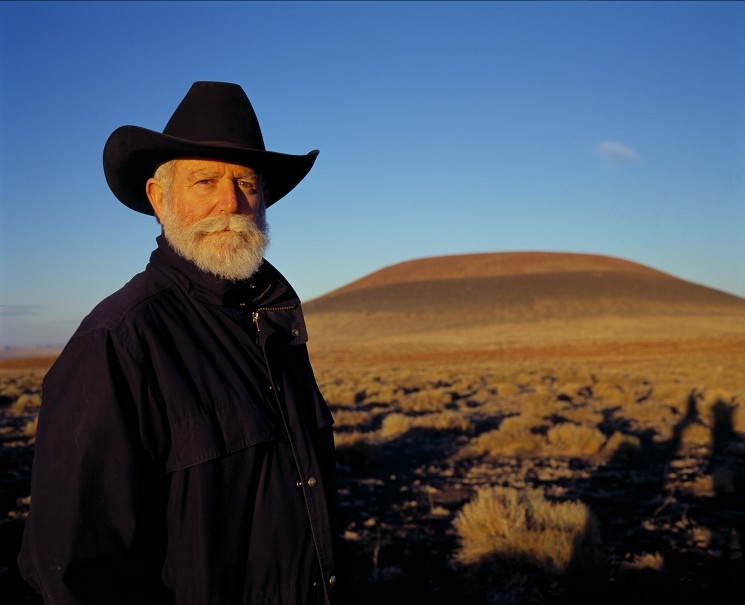In the world of art museums, James Turrell has been hard to miss this summer. He currently has major exhibitions open at the Guggenheim in New York, the Los Angeles County Museum of Art, and the Museum of Fine Arts, Houston. Put simply, Turrell’s medium is light. He creates indoor and outdoor spaces designed to demonstrate both the powers and limitations of human perception. As Turrell puts it, “My work has no object, no image, and no focus. With no object, no image, and no focus, what are you looking at? You are looking at you looking. What is important to me is to create an experience of worldless thought.”
To pique your interest, here are five of our favorite Turrell works:
 Hard Scrabble Sky
Hard Scrabble Sky
In the midst of the University of Illinois, Chicago’s campus, Turrell created one of his signature “Skyspaces”—a structure with an opening at the top that obscures the horizon, allowing viewers inside the elliptical structure to observe the ever-changing light and sky patterns through the roof above them.
 Stone Sky
Stone Sky
This 2005 work at a private home in Calistoga, CA combines one of Turrell's Skyspaces with an infinity pool. The large square at the end of the pool holds the Skyspace, accessible by swimming underwater at the end of pool. The interior is lined with teak and a square opening at the top opens the structure to the sky.

End Around
Many of Turrell’s works focus on enhancing the experience of looking at the sky or the natural world, but works from his Ganzfeld series use electric light to challenge the power of our eyes. "End Around" (2006) is currently being shown at the Museum of Fine Arts, Houston, and like his other Ganzfeld series works, "End Around" simulates a total loss of depth perception. The viewer is bathed in a field of blue light and, at some point, the light almost becomes a physical presence because of the loss of depth perception.

Roden Crater
Turrell has been working on this massive space in a natural cinder cone volcano in Arizona since 1972. Turrell’s site picks up on the ancient tradition of creating manmade monuments to view celestial events, with different rooms heightening the viewer’s perception of sunrise, sunset, the stars, and natural light. Roden Crater combines Turrell’s explorations of light and perceptual science into one unique site in Arizona’s Painted Desert but, unfortunately, it’s not open to the public (yet).
Perceptual Cells
These works are Turrell’s most intense. He’s been creating these types of immersive pieces since the late '80s, and there’s at least one on view at LACMA this summer. In a Turrell Perceptual Cell, the viewer enters a small, enclosed space alone to experience an intensely bright light that slowly changes over the course of the visit. Most viewers describe the experience as somewhat hallucinatory, while some find it too unsettling to view twice.
